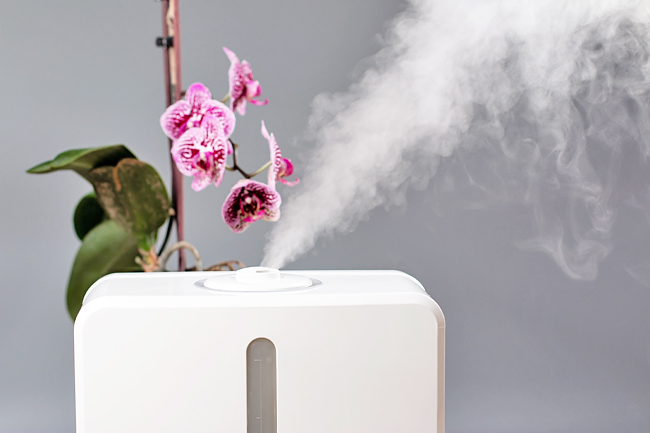Amudalat Ajasa
THE WASHINGTON POST – Air fresheners mask unpleasant odours with vibrant scents, but they come with foul risks for human health.
Whether it’s an aerosol bottle, plug-in, oil, scented candle or gel, if a product promises to clear smells, chances are it harbours toxins that pollute indoor air quality. That’s because many air fresheners rely on chemicals to generate fragrances and make them linger in the air.
“To a chemist ‘really clean’ would actually be no scent because the scent is caused by a chemical,” said associate professor Ryan Sullivan of chemistry and mechanical engineering at Carnegie Mellon University. “Truly clean means very low levels of chemicals.”
Air fresheners are among a broader category of everyday products scientists said are laden with chemicals that have the potential to cause hormonal disruptions and respiratory issues.
In many cases, consumers who use air fresheners have no way of knowing what’s in the product, or whether it’s toxic. “It’s hard for humans to accept that something I bought at the store could actually be harming me and my family or my pets,” said Sullivan, who has taught environmental chemistry for 11 years.
Here’s what to know to protect yourself and your family:
WHAT CHEMICALS ARE IN AIR FRESHENERS?
Air fresheners emit over 100 chemicals, including volatile organic compounds (VOCs) such as formaldehyde, benzene, toluene, ethylbenzene and xylenes – some of which are associated with different types of cancer in high doses. These chemicals can react with naturally occurring compounds in the air and form secondary pollutants that worsen indoor air quality.
The “main ingredients” to generate air pollution are volatile organic compounds, oxidants and sunlight, Sullivan said. In homes, fluorescent lights, which release ultraviolet light, can act as a replacement for sunlight. Many fragrant molecules react to oxidants, such as those released from gas stoves.

HOW DO AIR FRESHENERS AFFECT HUMAN HEALTH?
The effects of air fresheners will vary depending on the chemicals in the product and who’s smelling them. People with asthma or allergies can be more sensitive to scented products, according to the Environmental Protection Agency (EPA).
Over 75 per cent of air fresheners graded by the Environmental Working Group, a Washington-based non-profit that focusses on research and advocacy, contain either “likely” or “potentially significant” hazards to health or the environment based on concerns posed by exposure to their ingredients.
The group’s assessment also took into account whether makers of the products disclosed the ingredients in them. Exposure to high levels of VOCs can lead to adverse health effects, such as migraine headaches, asthma attacks, breathing difficulties and neurological problems.
Short-term exposure can irritate the eyes, throat and nose, as well as cause nausea.
Reactions to air fresheners can get worse over time, according to professor emeritus Claudia Miller at the department of family and community medicine at the University of Texas Health Science Centre at San Antonio.
Their chemicals can trigger first responders in the immune system called mast cells, which can cause allergic-like reactions, she said. This can lead to inflammation, illness and a higher chemical intolerance after repeated exposures. Once the cells become sensitised to VOCs, it makes them more susceptible to be triggered by them.
But Sullivan said his main concern are the chronic effects of air fresheners and cleaning products containing chemicals that can cause cancer or disrupt hormones. Some of these chemicals, such as phthalates, have “toxic effects at low doses and low concentrations because our natural hormone system is designed to respond to low levels of hormones”, he said.
Endocrine-disrupting chemicals, which interfere with the human hormone system, are often part of perfume ingredient lists but they don’t have to be disclosed, Sullivan explained.
In a 2007 analysis, independent testing by the Natural Resources Defence Council (NRDC) found phthalates, used to prolong the aroma of fragrances in the air, in 12 of 14 air fresheners it studied – even those labelled “all-natural” and “unscented”.
ARE ‘GREEN’ AIR FRESHENERS SAFE?
Air fresheners labelled organic, non-toxic, green or all natural can still emit potentially hazardous chemicals, said Sullivan, who is also associate director of the Institute for Green Science.
There is very limited data surrounding the toxicity of different chemicals in everyday products, he added. “Toxicity is really hard to assess.”
In their analysis, researchers from NRDC found that even “’natural’ products can contain toxic chemicals”.
“The regulations in this country around what you can put in cleaning products and certainly in air fresheners are pretty loose,” Sullivan said.
In the United States (US), air freshener makers are not required to disclose all the chemicals in their products. An analysis of air fresheners, including ones labelled green and organic, found fewer than 10 per cent of volatile ingredients disclosed on the product label, according to a report in Building and Environment, an international journal.
WHAT SHOULD YOU DO?
The EPA recommends cutting back on the use of products with strong fragrances – especially in indoor areas with poor ventilation. The agency also suggests minimising the use of sprays that spread scents throughout an area.
Essential oils may be the safest option to add fragrances to indoor spaces, but before using them you should first check what is added to the oil, Sullivan said.






